Our Integrated Approach
At SUR, we design landscapes that don’t just survive change, they adapt and strengthen through it.
Drawing from landscape ecology principles, our resiliency-focused design process creates systems that can absorb disturbances while maintaining their essential functions.
As climate variability increases and maintenance resources become more constrained, resilient design isn’t just environmentally responsible, it’s economically smart, providing landscapes that perform better with less input while protecting your investment. Here’s how we integrate resiliency into every aspect of our work:
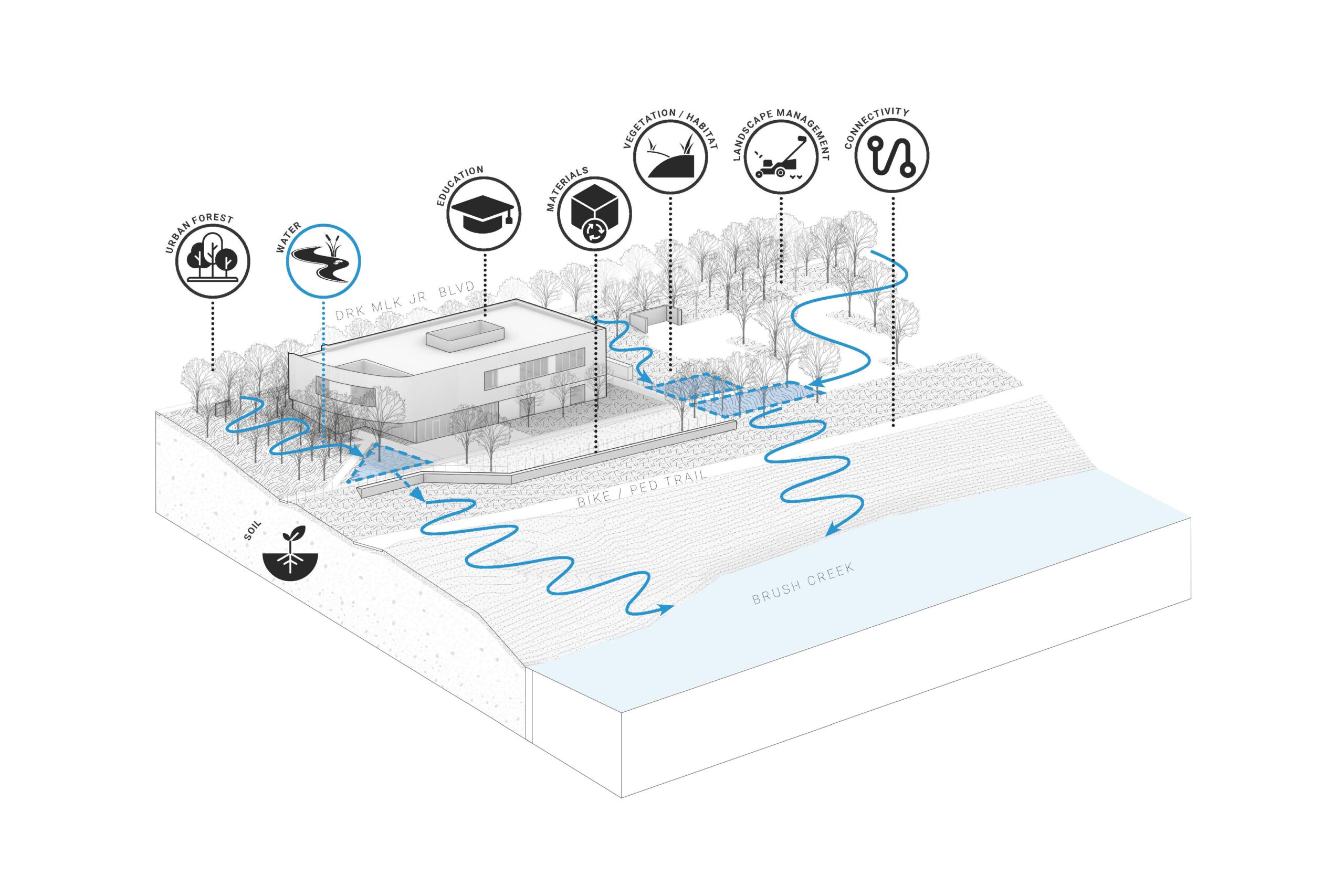
Soil Remediation
Healthy soil is the foundation of any resilient landscape. Our soil remediation approach uses native plants as living tools to break up compacted earth and rebuild soil structure through natural processes. Deep-rooted prairie species penetrate hardpan layers while their seasonal leaf drop and root decay continuously add organic matter, transforming degraded soils into thriving ecosystems that can support diverse plant communities and manage stormwater effectively.
Resiliency Outcomes: Transform compacted, nutrient-poor soils into self-sustaining growing media that support robust plant communities while improving water infiltration and carbon sequestration.
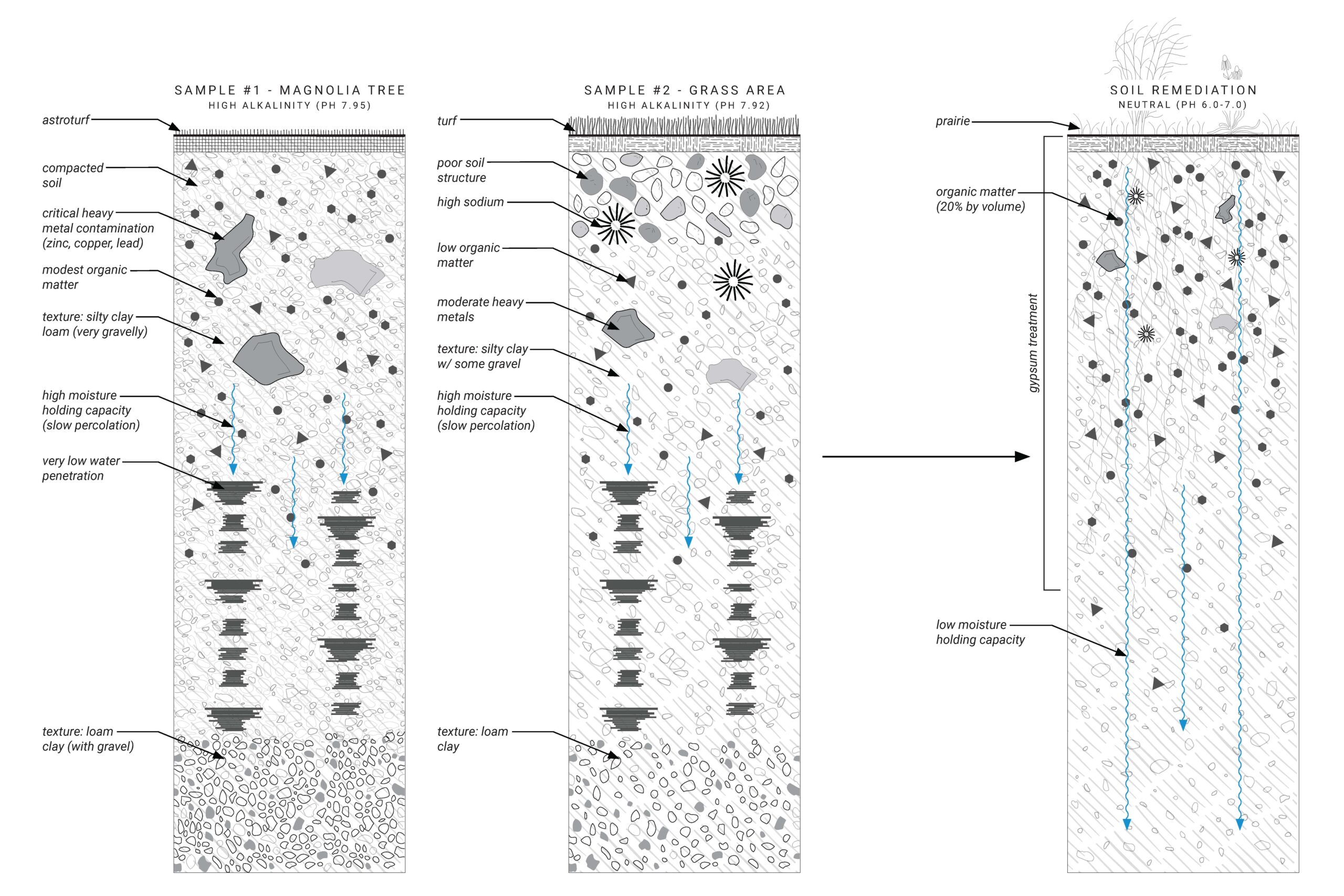
Water
Water management in resilient landscapes mimics natural watershed functions by capturing, slowing, filtering, and infiltrating stormwater through designed plant communities. Our approach treats water as a resource to be managed through living systems that maintain their essential structure during both normal conditions and extreme weather events.
Resiliency Outcomes: Improve water quality, reduce flooding, and require minimal mechanical maintenance while adapting to increasingly variable precipitation patterns.
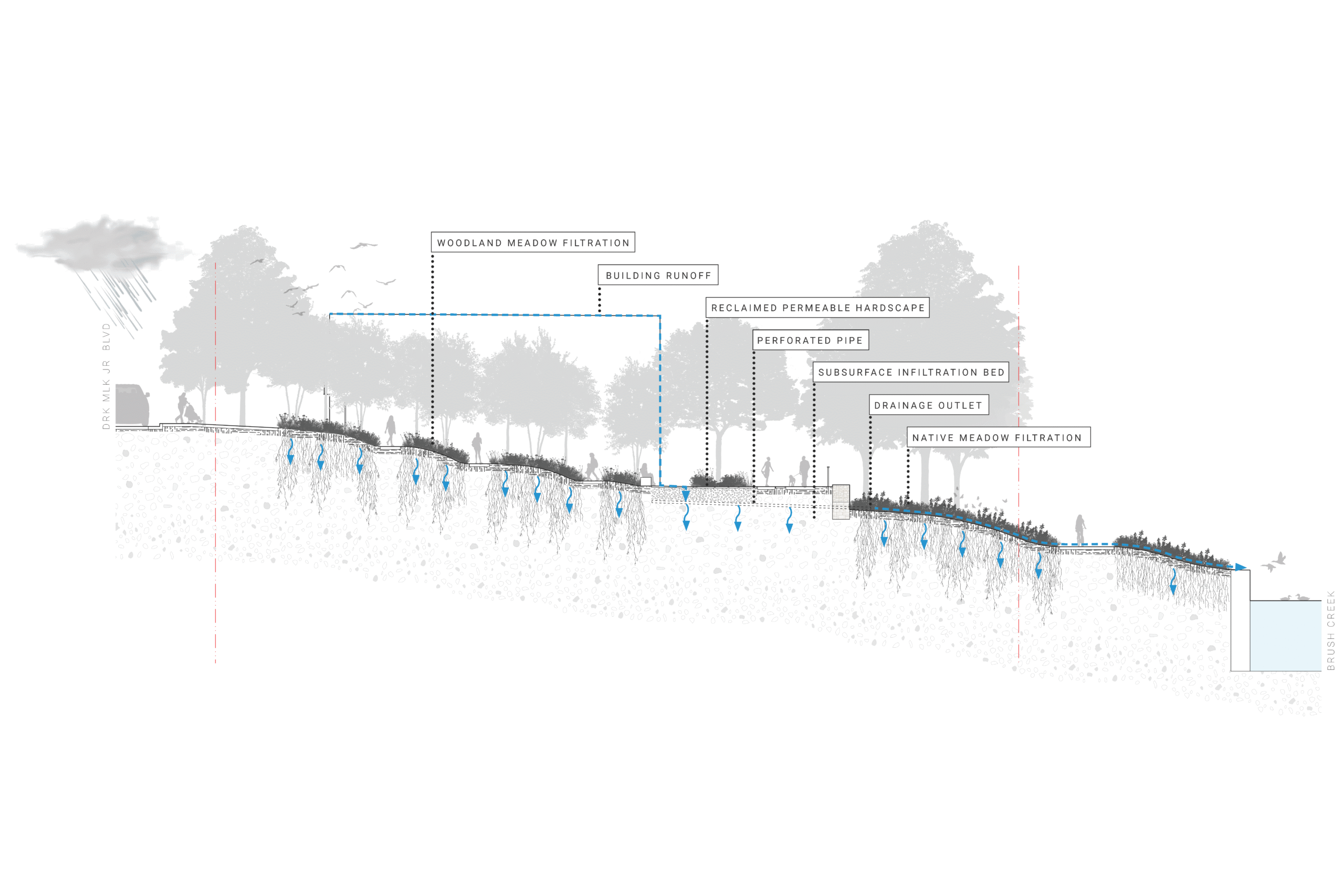
Vegetation / Habitat
Our vegetation strategies focus on creating diverse plant communities that support local wildlife while building soil health and ecosystem stability. Native plant selections work as an integrated system with deep root structures for soil remediation, diverse species for pollinator support, and strategic placement for stormwater filtration and wildlife corridors.
Resiliency Outcomes: Create self-sustaining plant communities that require minimal irrigation and fertilization while providing maximum ecological services and supporting regional biodiversity.

Urban Forests
Urban forests are essential for any city’s urban green infrastructure. Creating them goes beyond simply planting trees, it requires creating ecosystems that demonstrate flexibility and functional redundancy. By selecting diverse native species with complementary functions, we build canopy systems that can weather storms, droughts, and urban stressors while continuing to provide essential services like air filtration, heat island reduction, and stormwater interception.
Resiliency Outcomes: Maintain consistent ecosystem services through species diversity while connecting to broader regional habitat networks.
Landscape Management
True resilience means landscapes become easier to maintain as they mature. Our management strategies emphasize working with natural systems rather than against them. Examples include prairie meadows that require minimal mowing, native plant communities that thrive without irrigation, and adaptive management protocols that respond to changing conditions.
Resiliency Outcomes: Decrease inputs over time while providing increasing ecosystem services, with management strategies that can adapt to changing environmental and social conditions.
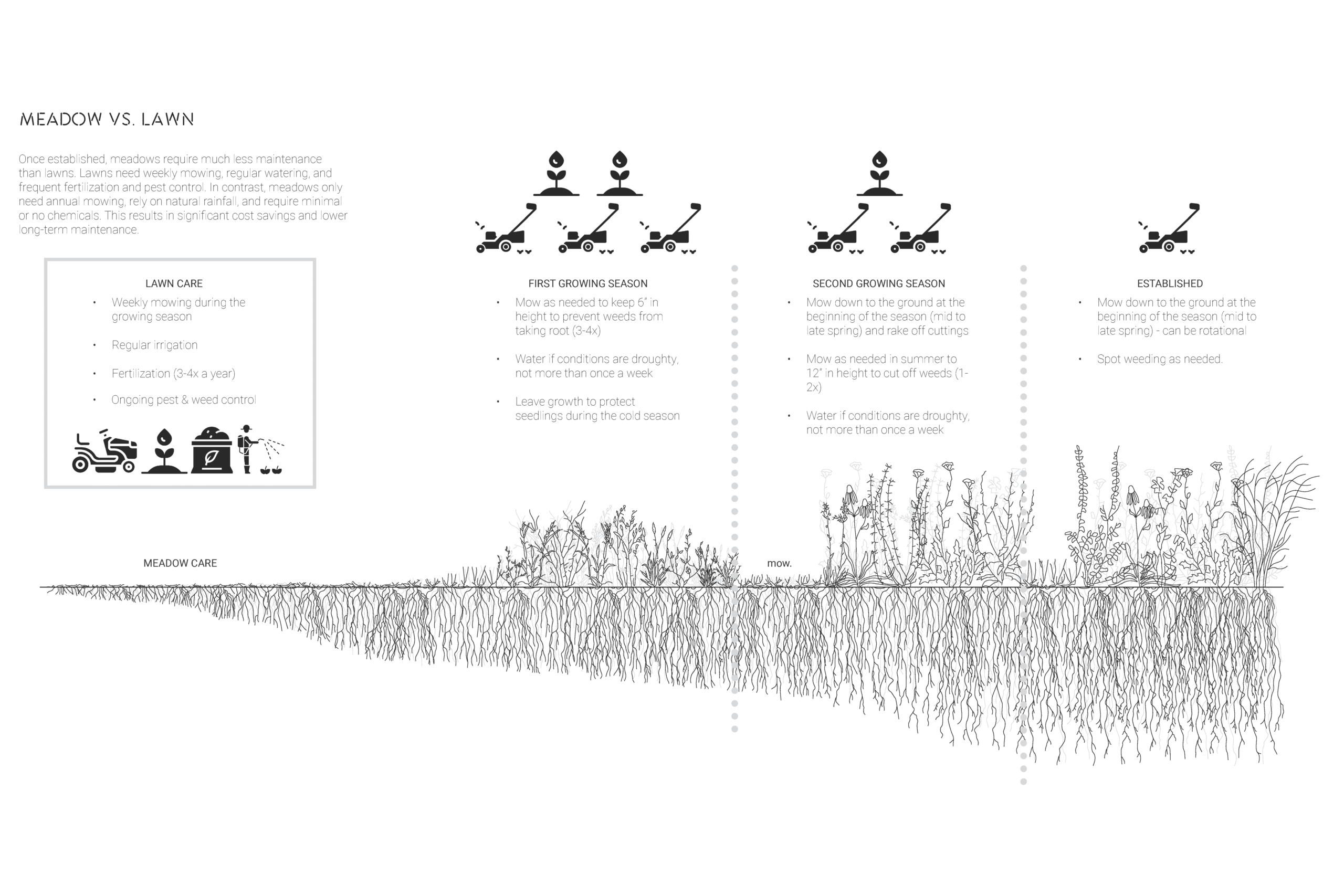
Material Reuse
Resiliency design extends beyond living systems to include material flows. We transform waste streams into valuable resources, thus reducing environmental stress on broader systems while demonstrating circular economy principles. Our reuse strategies keep resources circulating locally by crushing existing materials like concrete and limestone for new construction, repurposing demolished materials as landscape infrastructure.
Resiliency Outcomes: Reduce dependence on external resource extraction, lower transportation-related emissions, and demonstrate how circular systems can meet local construction needs.
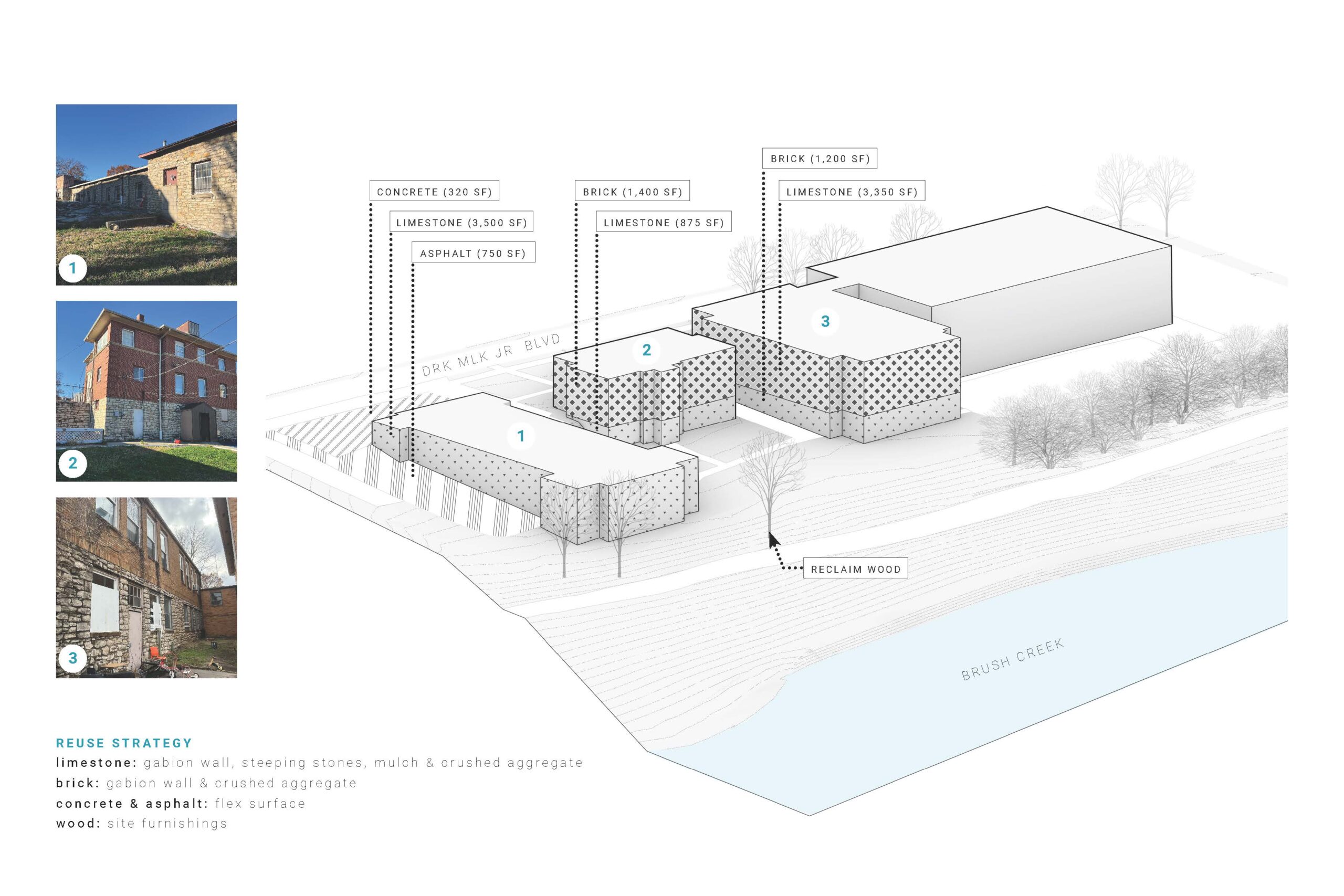
Education
Educational landscapes serve as living laboratories where communities can observe and understand ecosystem resilience in action. By designing spaces that reveal natural processes like seasonal changes, plant succession, and water filtration, we create opportunities for hands-on environmental education that builds the knowledge networks essential for long-term landscape stewardship.
Resiliency Outcomes: Build communities that understand, value, and actively participate in maintaining resilient landscapes, fostering environmental stewardship.
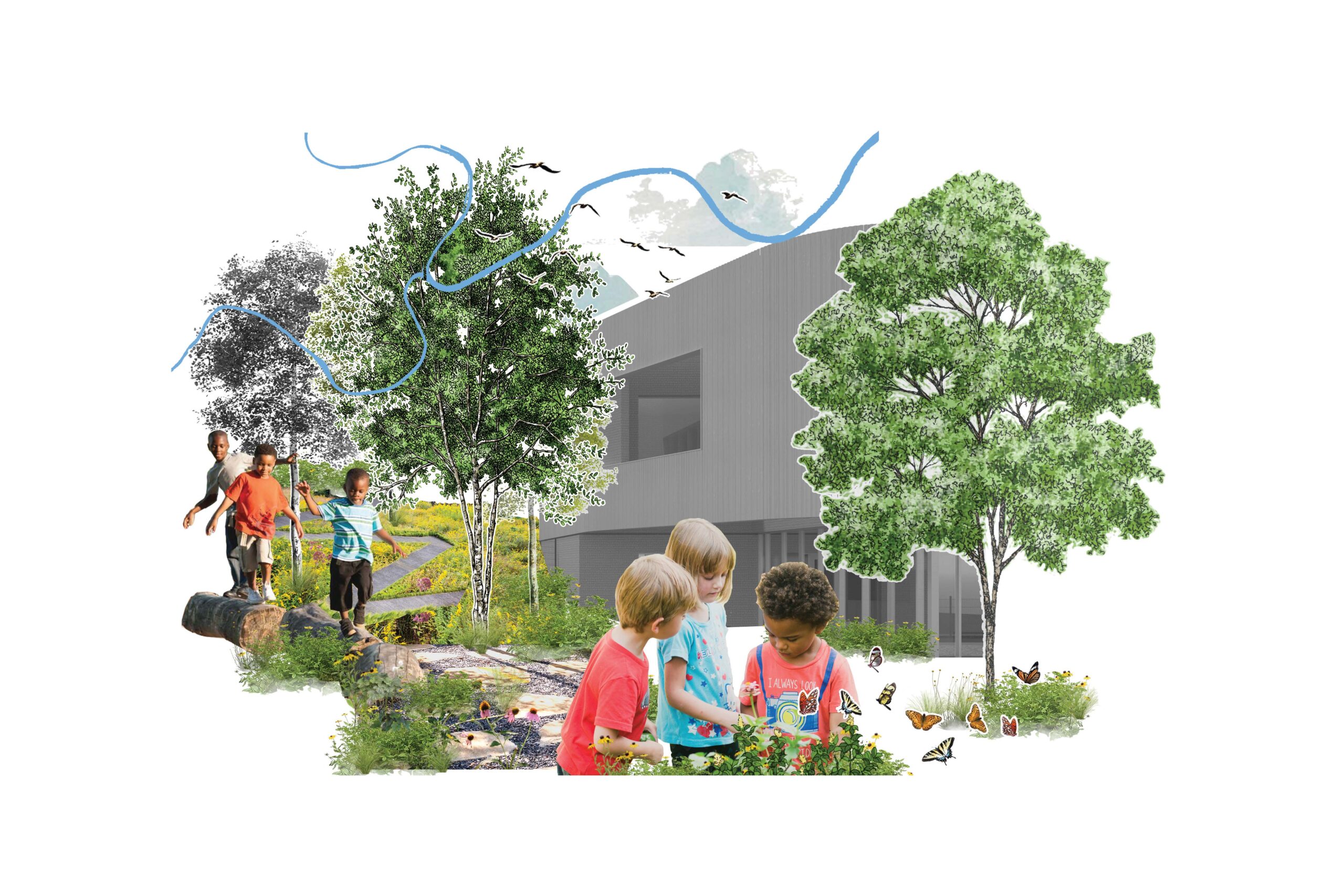
Connectivity
Connectivity ensures that disturbances in one area don’t cascade through entire systems. Our approach maps both ecological and social networks by linking habitat corridors and watershed functions and connecting community resources like parks, schools, libraries, and cultural centers. These connections provide the support that resilient systems need.
Resiliency Outcomes: Create networks that function as part of larger ecological and social systems, providing multiple pathways for species movement, resource flow, and community interaction that strengthen overall system stability.
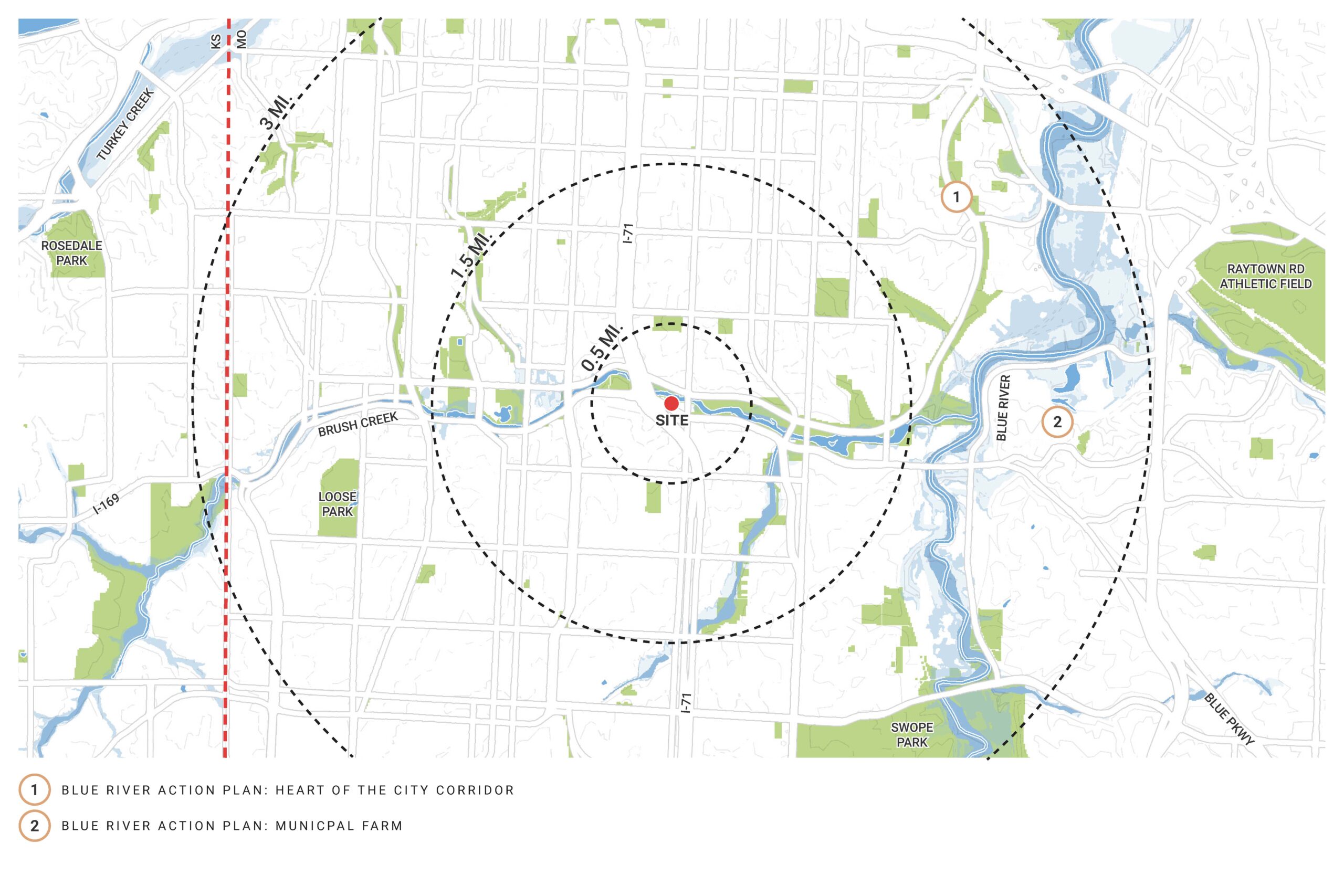
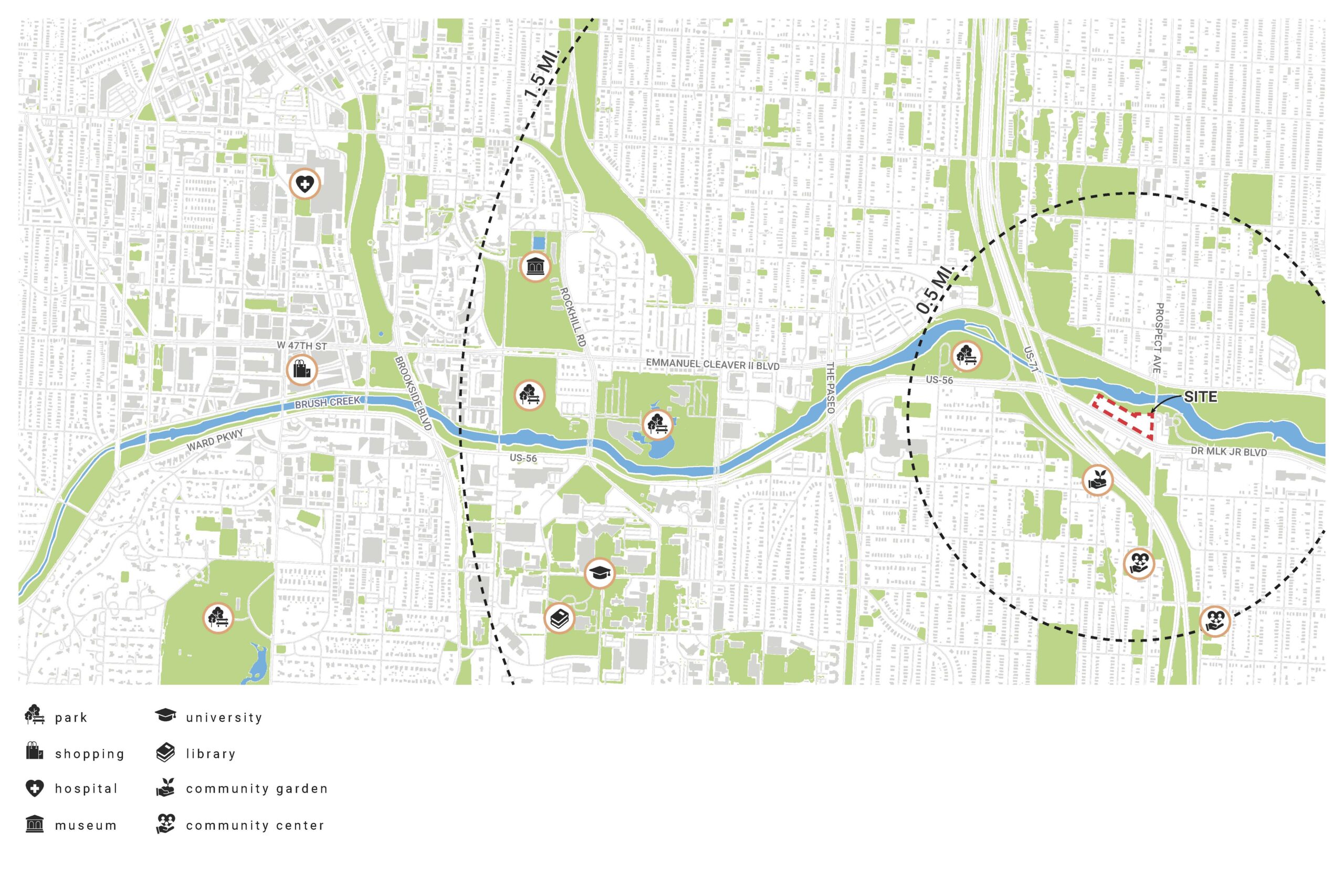
Summary
By making resiliency a foundational design principle rather than an add-on consideration, we create landscapes that evolve and strengthen over time, providing essential services for both human communities and natural ecosystems in an era of rapid environmental change.
While resilient designs may require thoughtful upfront planning, they typically reduce long-term maintenance costs and provide greater value as they mature. We work closely with project teams to assess site conditions and identify the most appropriate resilience strategies for your unique goals and budget.
Ready to explore how resilient design can transform your landscape? Let’s discuss your project.
